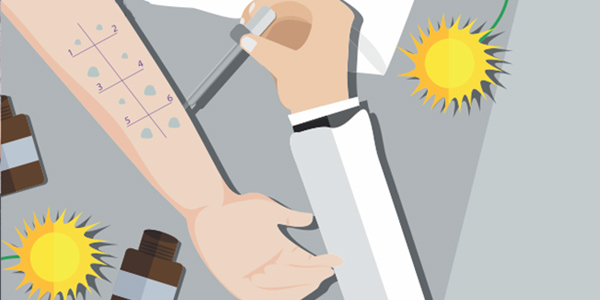The immune system of our body is designed to provide protection against disease or other potentially damaging foreign bodies. Generally the immune system identifies a variety of threats, including viruses, bacteria and parasites, and eliminates them from our body’s system.
[the_ad id=”13371″]
Our immune system sometimes misidentifies non-harmful substances as dangerous foreign bodies which leads to an over-reactive immune system, that gives rise to symptoms such as skin rashes, irritation, sneezing, watery eyes, etc. This is called as an allergic reaction. In severe cases, it leads to anaphylactic reactions, which can be life-threatening such as respiratory failure or cardiac arrest or shock.
Common triggers for allergic reactions and anaphylaxis
- Insect stings from honeybees, fire ants, wasps, hornets and yellow, etc.
- Medications
- Foods such as fish and peanuts.
Signs and symptoms of an allergic reaction
Symptoms may differ for each person depending on the type of allergen. The initial symptoms of anaphylaxis are mild to moderate and may include:
- Skin rashes(hives, urticaria, and welts)
- Tingling sensation in the mouth
- Runny or itchy nose with sneezing
- Swelling of face, eyes and lips
- Stomach cramps along with nausea and vomiting
First aid for allergic reactions
If you notice someone with the symptoms of an allergic reaction, then you should:
- Give OTC (over-the-counter) antihistamines, if mild allergic reactions such as hives and hay fever occur
- Decongestants for managing stuffy nose
- Eye drops if the eyes are watery and itchy
- Apply corticosteroid cream and cold compress, if itchy rashes are present
- If the reaction is due to a bee sting, scrape the stinger off from the skin with a fingernail or a card.
Signs and symptoms of an anaphylactic reaction
People who have allergic reactions can experience anaphylactic reactions after a few minutes of exposure to the allergen. In few people, delayed anaphylactic reaction can occur even in the absence of the trigger.
Anaphylactic reactions include the most serious forms of allergic reactions which include:
- Wheezing and persistent cough
- Difficulty in breathing or noisy breathe
- A weak and rapid pulse
- Changes in your voice (hoarse voice)
- Difficulty in speaking or swallowing
- Swelling of tongue and/ or throat
- Dizziness or loss of consciousness
First aid for anaphylaxis
Anaphylaxis is a medical emergency that requires immediate medical intervention. If you find some experiencing the symptoms of anaphylaxis, do not wait for the symptoms to improve. Instead, perform the below steps before it can lead to the death of the person.
- Call the nearest medical help emergency number.
- Meanwhile, ask if the person is prescribed rescue medication for allergic attacks which is usually an auto-injector.
- You may assist the person in using the auto-injector to inject the medication by pressing the injector against the person’s thigh. A second dose may be administered if the symptoms do not improve in 5 minutes.
- Lay down the person flat on his/her back to prevent shock. If the person has breathing difficulty, make the person sit comfortably and do not allow him/her to stand or walk; never give oral medications to a person who has trouble breathing.
- If the person is bleeding from the mouth, turn the person to side ways to prevent choking.
- Loose the clothing and cover the person with a blanket. Do not give any liquids to the person.
- If the person does not breathe or does not move then immediately begin the CPR (cardiopulmonary resuscitation, i.e. mouth-to-mouth breathing). Do continuous chest compression for about 100 times per minute till the medical team arrives. CPR restores the breathing and circulation in the victim.
Emergency treatment is essential even if the symptoms improve because symptoms can reoccur. The patient needs monitoring in the hospital by the medical experts for at least 4-6 hours.
A person, who is frequently prone to severe allergies, should always keep two injection kits of the rescue medication. In case of any signs of anaphylaxis, one should not hesitate to use the auto-injector, even if you are not sure if it is an allergy. It is safe to use the auto-injector as a precautionary measure.
Recognizing the initial signs of an allergic reaction and taking an immediate action makes the difference between life and death. Don’t make the biggest mistake of neglecting the first aid treatment for a severe allergic reaction.
Source:

